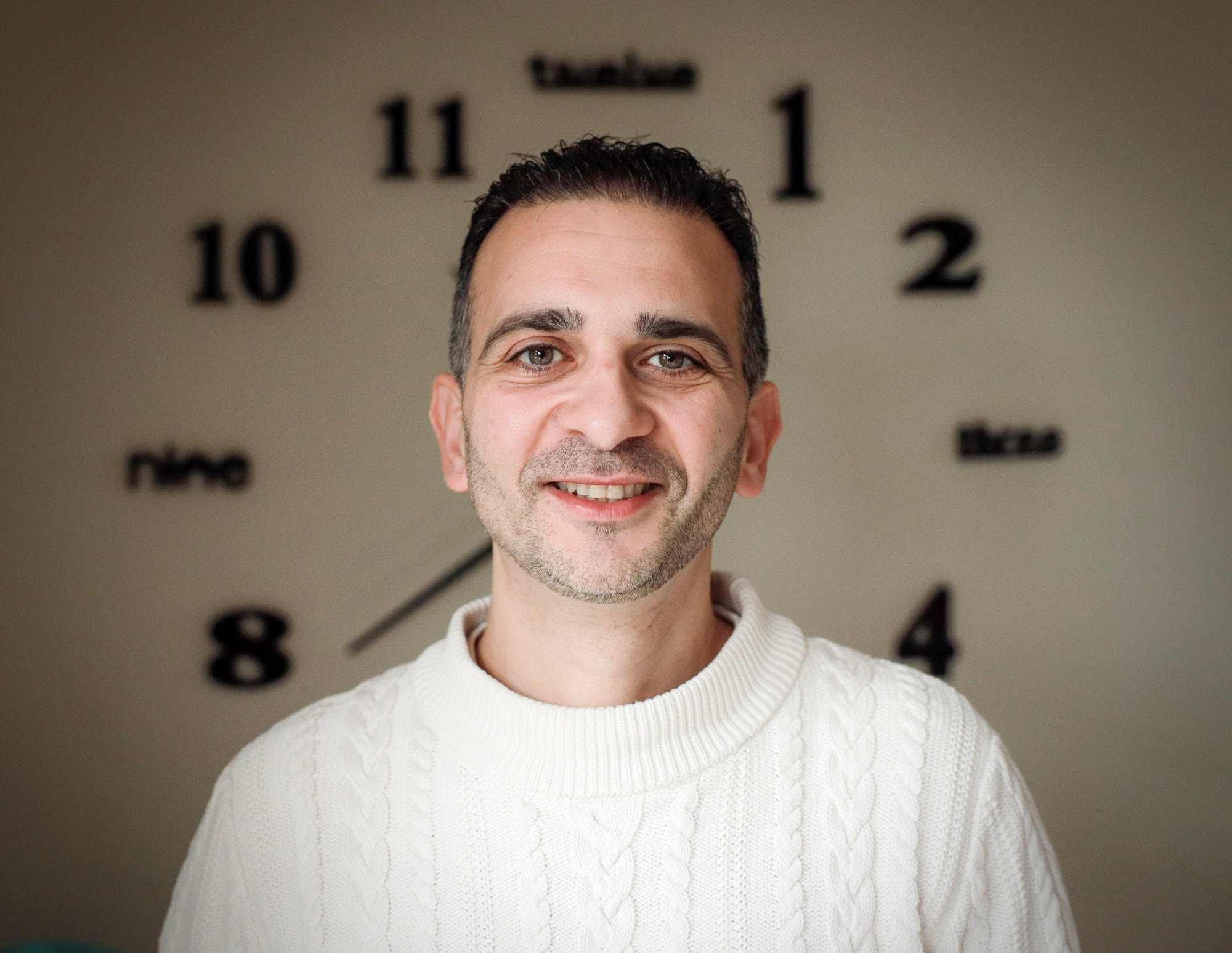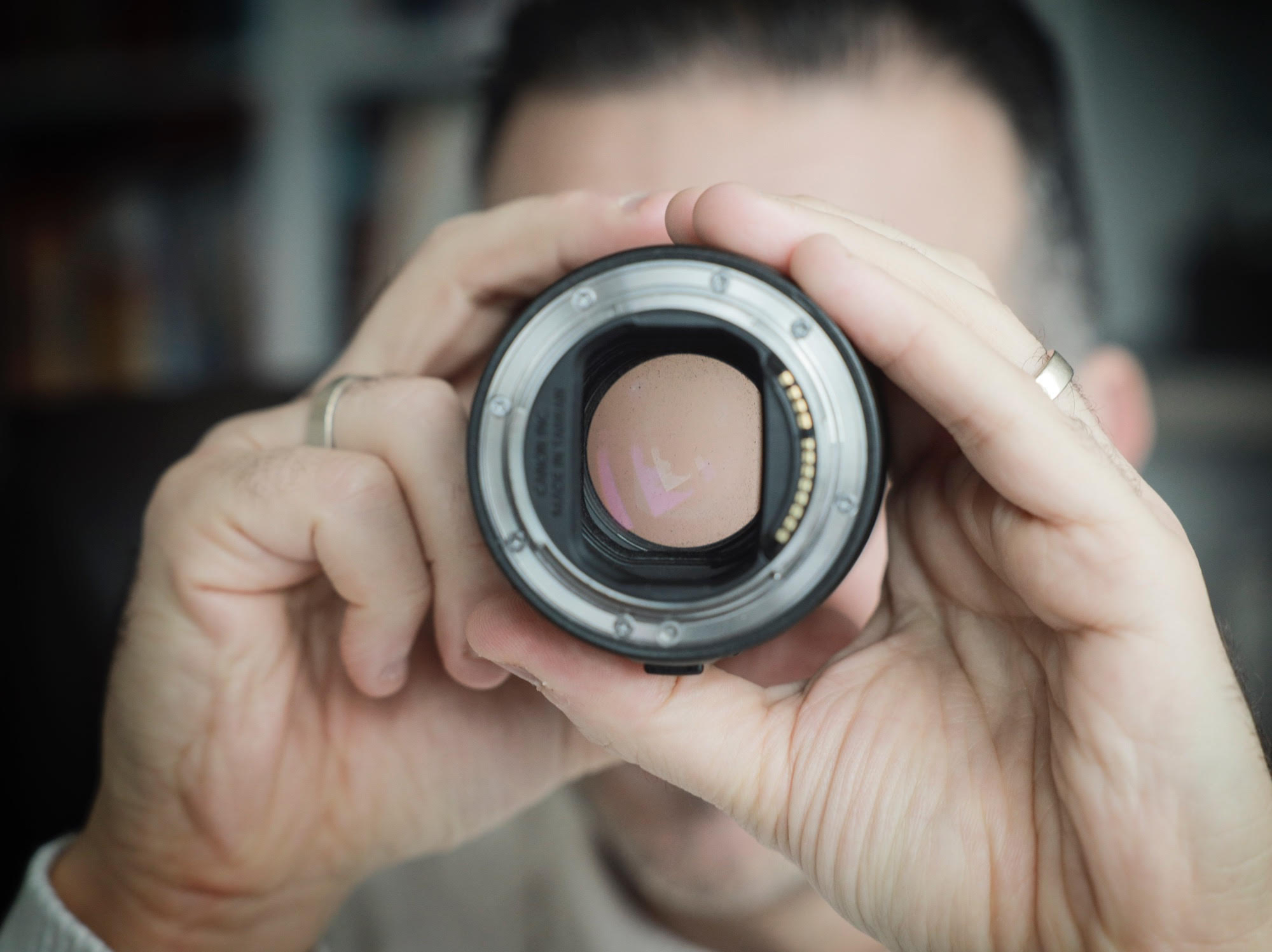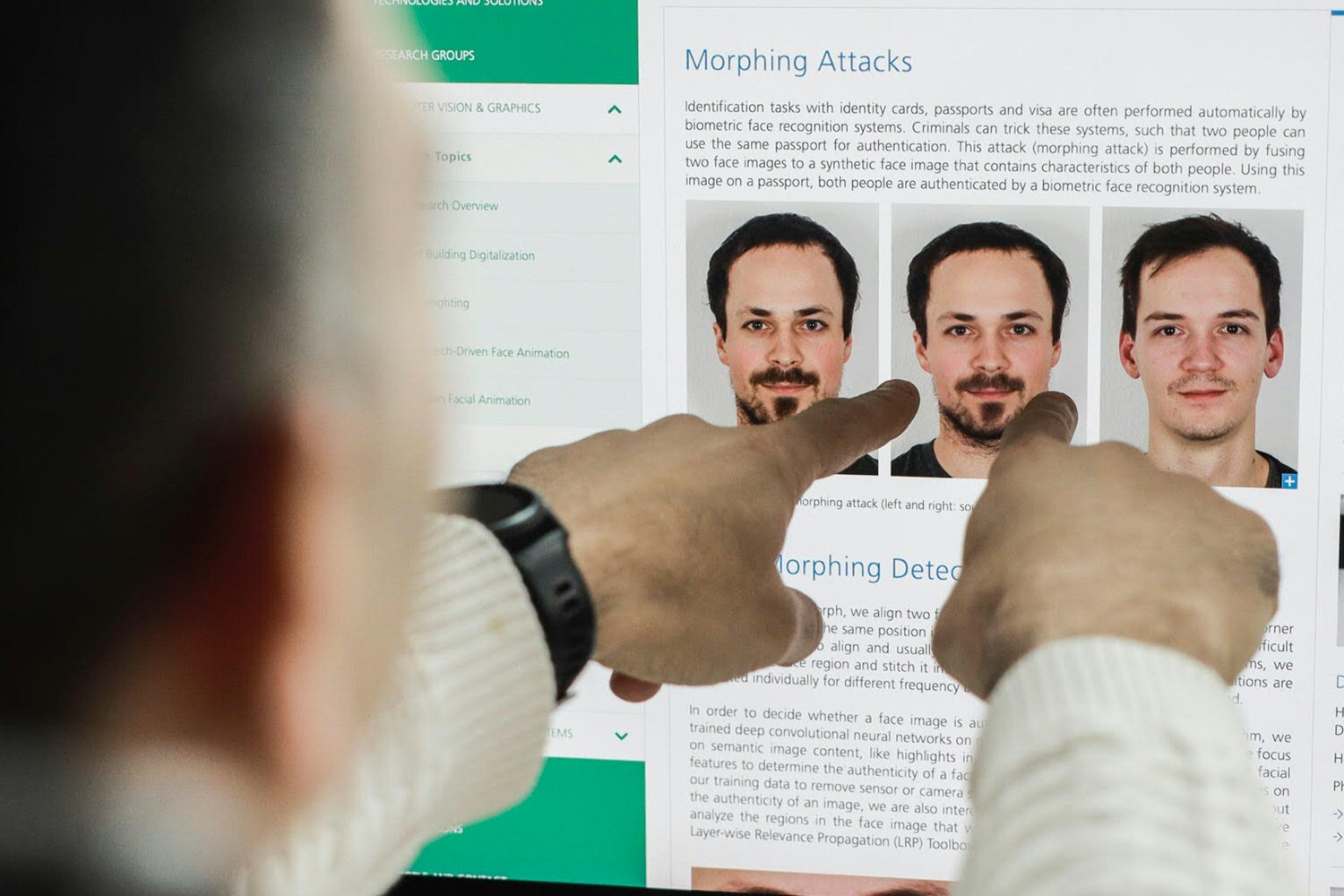Azzopardi's algoritmes zijn geïnspireerd op het brein
George Azzopardi, universitair hoofddocent Patroonherkenning bij het Bernoulli Institute for Mathematics, Computer Science and Artificial Intelligence, verdeelt zijn tijd tussen fundamenteel en toegepast onderzoek. Als themacoördinator Toegepaste AI bij de Jantina Tammes School zet hij zich in om de kloof tussen de wetenschap en praktische maatschappelijke toepassingen te overbruggen.
Tekst: Jelle Posthuma / Foto’s Henk Veenstra
“Het gemiddelde brein weegt minder dan 1,5 kg”, begint de universitair hoofddocent. “En toch is het ongelooflijk krachtig.” Dat is precies wat de in Groningen werkzame wetenschapper zo fascineert. In zijn onderzoek houdt hij zich bezig met op de hersenen geïnspireerde kunstmatige-intelligentiealgoritmes. “Neem het uitzonderlijke vermogen van de hersenen van een zoogdier om te generaliseren. Als kind leren we van onze ouders hoe een stoel eruitziet. Bijna moeiteloos zijn we in staat om in een nieuwe omgeving een stoel te herkennen die er totaal anders uitziet. Hieruit blijkt hoe goed de hersenen in staat zijn zich aan te passen en te leren.”
De bestaande kunstmatige-intelligentiesystemen moeten eerst vele duizenden afbeeldingen van een stoel bekijken, voordat ze weten hoe ze een andere stoel kunnen herkennen. “In ons onderzoek proberen we daarom algoritmes te ontwikkelen die het visuele deel van de hersenen van zoogdieren zo goed mogelijk nabootsen. Onze hersenen hebben bijvoorbeeld het verbazingwekkende vermogen om de belangrijkste kenmerken van een stoel te extraheren, waardoor we beter kunnen generaliseren.”

Hardware
De ontwikkelingen op het gebied van kunstmatige intelligentie zijn de afgelopen jaren in een stroomversnelling geraakt, weet Azzopardi. “Toen ik ruim tien jaar geleden aan mijn promotieonderzoek werkte, werden veel dingen die we nu kunnen, nog beschouwd als sciencefiction. Veel onderliggende kennis en technologie, daarentegen, dateert uit de jaren 60 van de vorige eeuw. In die tijd waren computers niet krachtig genoeg om iets met deze ideeën te doen, en er waren niet genoeg data beschikbaar om AI-systemen iets te leren. Nu we betere computers hebben en er meer data beschikbaar zijn, kunnen we veel meer inzicht verkrijgen in de doeltreffendheid van AI-systemen. Dit was cruciaal om de ontwikkelingen verder te brengen en leidde tot de grote veranderingen en verbeteringen op het gebied van AI van de afgelopen decennia.
Maar deze snelle ontwikkelingen gaan ook gepaard met uitdagingen, vervolgt de universitair hoofddocent. “Het gebruik van krachtige kunstmatige-intelligentiesystemen vereist veel rekenkracht en dus een aanzienlijke hoeveelheid energie.” Alleen grote techbedrijven hebben voldoende middelen om AI te gebruiken. Andere instellingen, zoals universiteiten, beschikken veelal niet over deze middelen, zo weet Azzopardi. “Ons doel is daarom om algoritmes te ontwikkelen die efficiënt zijn en minder middelen vereisen zonder in te boeten aan doeltreffendheid.”

Nabootsing
Om dit doel te bereiken, laat Azzopardi zich opnieuw inspireren door het visuele deel van de hersenen. Onze hersenen verbruiken namelijk slechts zo’n 20 Watt en zijn daarmee hyperefficiënt. Het nabootsen van de uitzonderlijke hersencapaciteit, wat bekend staat als ‘neuromorphic computing’, is een van de hoofddoelen van het Groningen Cognitive Systems and Materials Centre (CogniGron), waarvan Azzopardi lid is. “Het komt neer op meer bereiken met minder”, aldus de universitair hoofddocent.
Cruciaal zijn de termen spaarzaamheid en inhibitie, of het vermogen van de hersenen om energie te besparen en 'slim te zijn', legt Azzopardi uit. ‘’Zo kunnen zoogdieren, wanneer ze visuele informatie verwerken, dankzij inhibitieprocessen onderscheiden wat op de voorgrond is en wat niet. In ons fundamenteel onderzoek proberen we deze kennis over de hersenen om te zetten in algoritmes. De kennis die wordt omgezet in nieuwe, slimme algoritmes leent zich uitstekend voor verschillende toepassingen”, aldus de universitair hoofddocent. “Deze toepassingen zijn cruciaal om de doeltreffendheid van onze algoritmes in de praktijk aan te tonen.”
Wetshandhaving
Azzopardi noemt als voorbeeld een algoritme dat hij met zijn team binnen een Europees forensisch consortium ontwikkelde. “Dit project is gericht op camera-identificatie. Kleine imperfecties in het maakproces van de sensoren die in elke camera zijn ingebouwd, zorgen voor minieme beschadigingen die niet zichtbaar zijn voor het blote oog. Deze beschadigingen kunnen we zien als kenmerken die een camera uniek maken. We hebben algoritmes ontwikkeld die in staat zijn om deze kenmerken te gebruiken voor camera-identificatie en om vast te stellen welke foto’s door dezelfde camera zijn gemaakt.’’
Deze unieke kenmerken kunnen van groot belang zijn voor forensisch onderzoek, vervolgt de wetenschapper. “Stel dat de politie tijdens een huiszoeking bij een verdachte van kindermisbruik een camera aantreft. De beelden op die camera kunnen worden vergeleken met eerder vastgelegde beelden, omdat alle beelden die met dezelfde camera gemaakt zijn een uniek kenmerk hebben. De politie kan zo verschillende zaken met elkaar in verband brengen en zelfs nieuwe zaken openen.”

Impact
Voor dit project ontving Azzopardi in 2023, samen met collega-onderzoeker Guru Bennabhaktula, de Ben Feringa Impact Award. Bovendien ontstond uit het project een nieuwe samenwerking. Naar aanleiding van nieuwe uitdagingen op het gebied van de biometrische gezichtsherkenning, met name door de komst van deepfakes en aanvallen door middel van gezichtsmorphing, probeert de RDW (Rijksdienst voor het Wegverkeer) zijn beveiligingssystemen te verbeteren.
Bij aanvallen door middel van gezichtsmorphing wordt een samengestelde afbeelding gemaakt door twee of meer gezichten in elkaar te laten overlopen en zo een nieuwe afbeelding te creëren die sterk lijkt op elk van de oorspronkelijke gezichten. Deze techniek vormt een ernstige bedreiging voor identiteitscontroleprocessen. Criminelen kunnen deze techniek bijvoorbeeld gebruiken om een nieuwe identiteit aan te nemen. De door het team van Azzopardi ontwikkelde algoritmes bieden een veelbelovende oplossing, omdat daarmee kan worden gecontroleerd of de ontvangen afbeeldingen van gezichten inderdaad zijn vastgelegd door geautoriseerde camera’s. “Deze mogelijkheid is zeer belangrijk voor de verbetering van de nationale en internationale veiligheid”, aldus de onderzoeker.
Dergelijke samenwerkingsverbanden zijn waardevol en worden steeds meer erkend op universiteiten, stelt Azzopardi. Hij wijst op het toenemend aantal mogelijkheden voor onderzoekers om het gezichtsveld te verruimen tot buiten de traditionele academische grenzen. “Het verkrijgen van subsidies van onderzoeksfinanciers zoals de NWO (Nederlandse Organisatie voor Wetenschappelijk Onderzoek) blijft een belangrijke focus, maar wetenschappers verkennen ook vruchtbare samenwerkingsverbanden met het bedrijfsleven en andere organisaties. Ons onderzoek had bijvoorbeeld veel baat bij de steun van de RDW. Dit toont de diverse financieringsmogelijkheden voor innovatieve projecten.”

Scholen voor wetenschap en samenleving
In zijn nieuwe rol als themacoördinator Toegepaste AI bij de Jantina Tammes School of Digital Society, Technology and AI wil Azzopardi interdisciplinair werken verder aanmoedigen: “Niet alleen tussen disciplines en faculteiten, maar ook tussen de universiteit en de samenleving, met name het bedrijfsleven. Dat is mijn missie.” Als themacoördinator, een functie die hij sinds eind 2023 vervult, hoopt de universitair hoofddocent verschillende belanghebbenden samen te brengen, zeker nu AI zo’n hoge vlucht heeft genomen. “Je merkt dat het thema mensen steeds meer aanspreekt. Iedereen heeft er wel ideeën over. Op de Schools kunnen we deze mensen, die eerst op zichzelf werkten, met elkaar in contact brengen. Dat is volgens mij precies de reden waarom de Schools zijn opgericht.”
Meer informatie
Meer nieuws
-
11 december 2025
Stormachtige planeten en een onverwachtse atmosfeer
-
09 december 2025
RUG-hoogleraar bij COP30: ‘Het is altijd drama’
